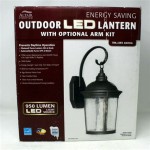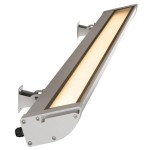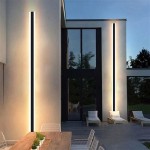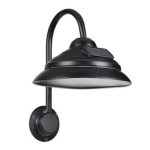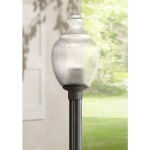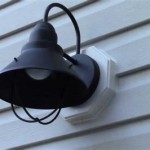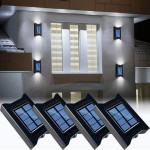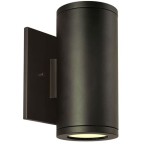How to Design Your Own Outdoor Kitchen
Designing an outdoor kitchen represents a significant investment in both property value and lifestyle enhancement. Careful planning is crucial to ensure the space is functional, aesthetically pleasing, and tailored to individual needs and preferences. This article outlines key considerations and steps involved in designing a successful outdoor kitchen.
The initial phase of outdoor kitchen design involves a comprehensive assessment of available space. This assessment dictates the overall layout, the types of appliances that can be accommodated, and the traffic flow within the area. Existing structures, such as patios, decks, or covered porches, will significantly influence design choices. The relationship between the indoor kitchen and the outdoor cooking area should also be considered to facilitate easy transport of ingredients and cookware.
Sunlight exposure is a vital factor. Areas receiving excessive direct sunlight may require shading solutions, such as pergolas, awnings, or strategically planted trees. Similarly, prevailing wind directions should be considered to minimize smoke drift towards seating areas or adjacent properties. Local building codes and regulations pertaining to outdoor kitchen construction, including permits, setbacks, and gas line installations, must be thoroughly researched and adhered to.
Budgeting is another primary consideration. Outdoor kitchen construction costs can vary widely depending on the materials used, the complexity of the design, and the appliances selected. Establishing a realistic budget early in the process helps prioritize design elements and avoid overspending. It is advisable to obtain multiple quotes from contractors and suppliers to ensure competitive pricing. Contingency funds should also be allocated to address unforeseen expenses that may arise during construction.
Determining the Functionality and Layout
The functionality of an outdoor kitchen is paramount. The design should reflect the intended use of the space. For example, an individual who enjoys grilling frequently will require a high-quality grill with ample counter space for food preparation. A family that entertains guests regularly may need a larger cooking surface, a beverage center, and ample seating areas.
The work triangle, a concept borrowed from indoor kitchen design, is also applicable to outdoor kitchens. This principle emphasizes the efficient arrangement of the cooking surface, sink, and refrigerator to minimize unnecessary movement. Optimizing the spatial relationship between these key elements enhances workflow and overall usability.
Layout options for outdoor kitchens include linear, L-shaped, U-shaped, and island configurations. A linear layout is often suitable for smaller spaces, while L-shaped and U-shaped layouts provide more counter space and storage. An island layout can serve as a central cooking hub and social gathering point. The choice of layout should be based on the available space, desired functionality, and aesthetic preferences.
Counter space is a critical element. Adequate counter space is needed for food preparation, plating, and serving. Durable and weather-resistant countertop materials, such as granite, concrete, or stainless steel, are recommended. The height of the countertops should also be ergonomically appropriate to prevent strain and fatigue during food preparation.
Storage solutions are also essential. Outdoor kitchens require storage for grilling accessories, cookware, utensils, and cleaning supplies. Weather-resistant cabinets and drawers are necessary to protect these items from the elements. Built-in storage units can be integrated into the design to maximize space utilization and maintain a clean and organized appearance.
Selecting Appliances and Materials
The selection of appliances is a significant aspect of outdoor kitchen design. Grills are the centerpiece of most outdoor kitchens. Options include gas grills, charcoal grills, pellet grills, and smokers. The choice depends on the user's cooking style and preferences. High-quality grills with durable construction and reliable performance are recommended.
Side burners provide additional cooking versatility. They can be used for preparing sauces, boiling water, or simmering dishes. Refrigerators are essential for storing perishable ingredients and beverages. Outdoor-rated refrigerators are designed to withstand the elements and maintain optimal temperatures. Beverage centers, including wine coolers and ice makers, are popular additions for entertaining.
Sinks are necessary for washing hands, cleaning utensils, and preparing food. Outdoor sinks should be made of durable materials, such as stainless steel, and equipped with hot and cold water. Waste disposal systems, such as garbage disposals or trash cans, should be incorporated into the design to maintain cleanliness and hygiene.
Material selection plays a crucial role in the durability and aesthetics of an outdoor kitchen. Weather-resistant materials are essential for withstanding the elements, including sunlight, rain, and extreme temperatures. Stone, brick, and concrete are popular choices for building the structure of the kitchen. Stainless steel is commonly used for appliances, countertops, and cabinetry.
Composite decking and pavers are excellent options for flooring. These materials are durable, low-maintenance, and resistant to moisture and fading. Natural stone can also be used for flooring, but it may require more maintenance and sealing. The color and texture of the materials should complement the surrounding landscape and architectural style.
Lighting is an important consideration for outdoor kitchens. Ambient lighting, task lighting, and accent lighting can be used to create a functional and aesthetically pleasing environment. String lights, spotlights, and under-cabinet lighting are popular options. LED lighting is energy-efficient and long-lasting. Lighting should be strategically placed to illuminate work areas and highlight architectural features.
Addressing Utilities and Safety
Utilities are essential for powering appliances and providing water for sinks. Gas lines must be installed by a qualified professional and comply with all local building codes. Electrical wiring should also be installed by a licensed electrician and protected from the elements. Ground fault circuit interrupters (GFCIs) are required for outlets near water sources to prevent electrical shocks.
Water lines must be properly insulated to prevent freezing in cold climates. Drainage systems should be installed to prevent water from pooling around the kitchen area. Proper ventilation is also important, especially for enclosed outdoor kitchens. Ventilation systems can help remove smoke and fumes from the cooking area and prevent the buildup of carbon monoxide.
Safety is a paramount concern in outdoor kitchen design. Fire safety measures should be implemented to prevent accidents and injuries. Fire extinguishers should be readily accessible, and flammable materials should be stored away from heat sources. Grills should be placed on a stable, non-combustible surface and away from overhead structures.
Adequate space should be provided around the cooking area to prevent overcrowding and allow for safe movement. Slip-resistant flooring materials should be used to prevent falls. Proper lighting is essential for illuminating the cooking area and preventing accidents at night. Handrails should be installed on steps or ramps to provide additional support.
Pest control is another consideration in outdoor kitchen design. Food scraps and spills can attract insects and rodents. Regular cleaning and proper waste disposal are essential for preventing pest infestations. Outdoor kitchens can be screened in to keep out insects. Pest-resistant materials, such as cedar, can be used for construction.
Designing an outdoor kitchen involves careful planning and attention to detail. By considering the factors outlined in this article, individuals can create a functional, aesthetically pleasing, and safe outdoor cooking space that enhances their lifestyle and property value.

36 Ideas For Building The Ultimate Outdoor Kitchen Extra Space Storage

Outdoor Kitchen Ideas 10 Designs To Copy Bob Vila

16 Outdoor Kitchen Design Ideas And Pictures Alfresco Styles

28 Best Outdoor Kitchen Ideas And Designs For Your Home Foyr

21 Best Outdoor Kitchen Ideas For Any Budget

Designing An Outdoor Kitchen Garden

23 Outdoor Kitchen Ideas Best Designs For Inspiration

What To Know About Adding An Outdoor Kitchen

Outdoor Kitchen Design Bwood Living

21 Best Outdoor Kitchen Ideas For Any Budget
Related Posts
